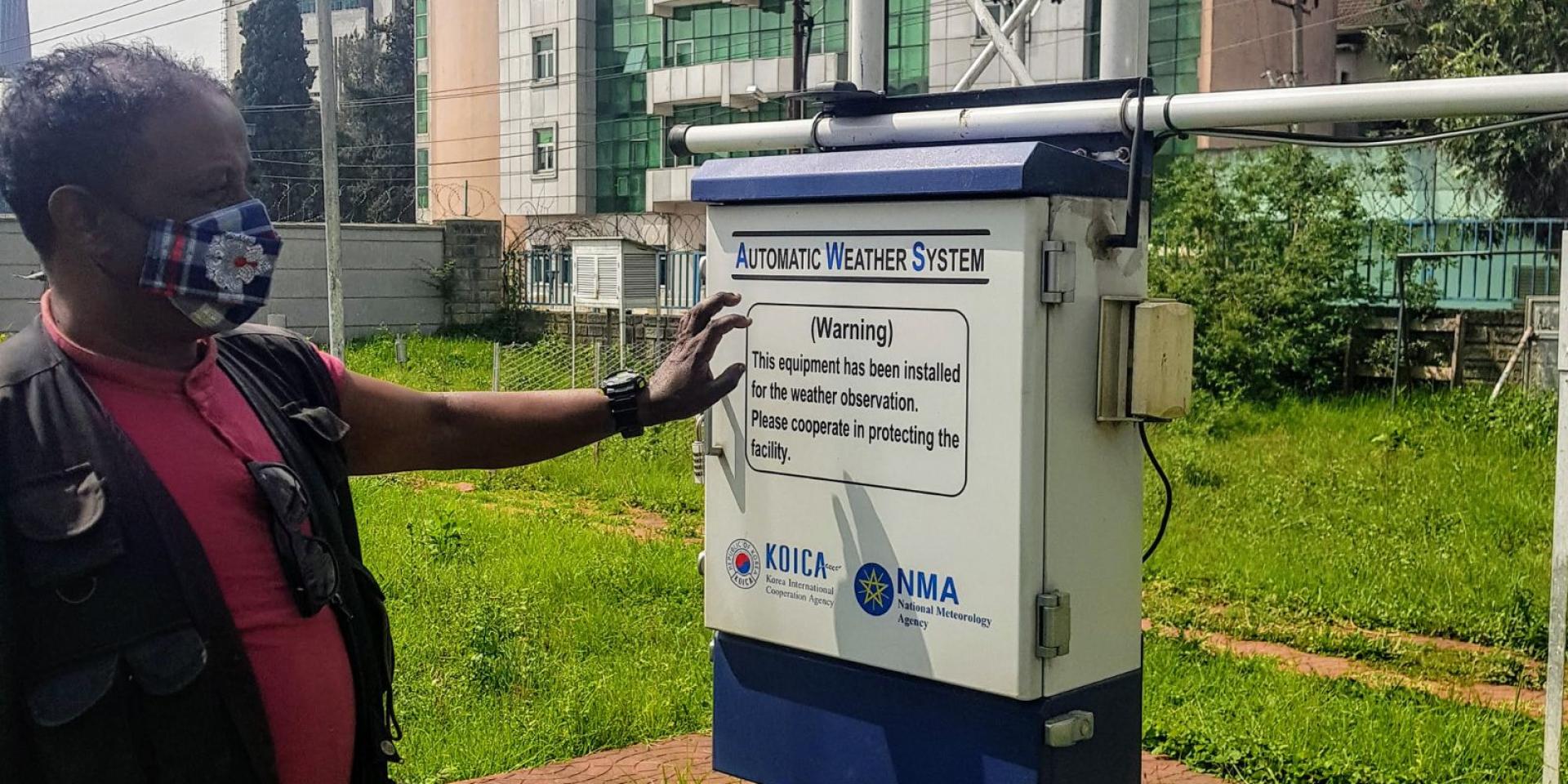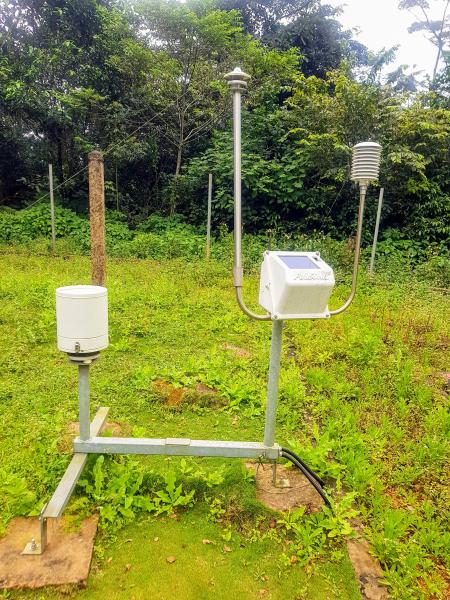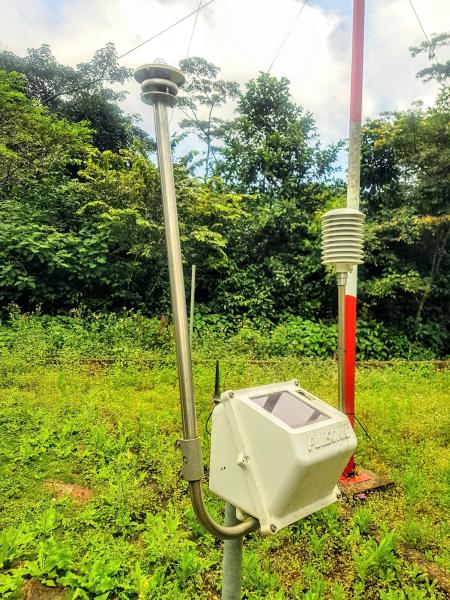

New digital innovation harnesses power of real-time weather data
With AICCRA support, a new data-management and visualization tool is helping national meteorological services and regional climate centers across Africa, harnessing real-time weather data for decision-making in agriculture.
National meteorological services (NMS) play a central role in their country’s efforts to anticipate and manage climate-related risks, and to develop effective policies for resilience and adaptation.
The real-time monitoring of floods, droughts and other climate hazards—as well the various climate and weather forecasts NMS provide—help agencies make critical decisions about agriculture, public health, energy, transportation, and other fundamental components of society.
However, these operations require vast amounts of reliable and timely climate and weather data. This is something that, historically, many African countries have lacked.
Recent initiatives backed by the UN Development Program, the World Bank and other international partners have worked to increase the availability and quality of climate data on the continent, particularly by investing in networks of automated weather stations (AWS).
These stations demand far less human involvement than traditional ones, which require staff visits to collect data–multiple times a day in some cases.
By contrast, automated stations can take measurements every fifteen minutes, and automatically transmit the data to a meteorological office.
AWS can also be set up in places where continuous weather data has been more difficult to collect, such as in remote rural communities.
This logging of higher-resolution data creates more robust historical climate datasets that ultimately lead to improved climate predictions and forecasts for a country.
When it comes to responding to—and mitigating—climate emergencies, having these real-time data networks can make all the difference.



Top-of-the-line Automatic Weather Stations make important measurements of rainfall, temperature, and other parameters in near real-time. But the inability of national meteorological services to efficiently, combine, synchronize, and otherwise integrate this data coherently in their databases has limited their use. This AWS in Togo takes important measurements every 15 minutes and automatically transmits them to Meteo Togo.
A new data challenge
The rapid expansion of automated weather-monitoring networks is addressing critical data gaps across Africa.
But they’ve also created a new problem, one caused by a lack of coordination among the various initiatives, programs, and donors who have funded the building of these networks.
The result is that a given country may have many types of automated networks, each built by a different company, and each requiring different parts and processes to maintain and repair.
Most importantly, companies have significant differences in the way their products format and store data, which means each national meteorological service ends up having to manage an onslaught of data from networks that can’t ‘talk’ to each other.
It’s like trying to make sense of a story whose every page is written in a different language and formatted differently. Even though all the information is there, piecing it all together takes extra time and effort.
The inability of a national meteorological service to efficiently combine, synchronize, and analyze these datasets ultimately means they cannot be meaningfully used for critical decision making.
Scaling a transformative solution
In response to a demand from national meteorological agencies for greater support in addressing these AWS challenges, Columbia University’s International Research Institute for Climate and Society (IRI) developed the Automatic Weather Station Data Tool (ADT). Thanks to support from the Accelerating Impact of CGIAR Climate Research for Africa (AICCRA) and Adapting Agriculture to Climate Today, for Tomorrow (ACToday) projects, use of the new tool has increased significantly among African national meteorological services.
ADT is a free web-based application with an easy-to-use graphic interface that enables users from national meteorological services to access, process, perform quality control, and visualize data from different AWS networks in one place.

The ADT web interface for Kenya showing seven different types of AWS networks, as well as duplicate coordinates identified.
It also enables real-time monitoring of stations to see which ones are working and which ones are offline to more easily understand where the data is coming from and address any interruptions in transmission sooner.
In less than a year, AICCRA has trained NMS staff from five of its focus countries—Ethiopia, Ghana, Kenya, Senegal and Zambia—to use ADT to help synchronize their data streams.
The demand for these trainings arose from the NMS themselves. Meanwhile, Mali’s meteorological service is hoping to receive similar trainings in the near future.
ADT emerged from the broader climate services delivered under the Enhancing National Climate Services (ENACTS) initiative, which recognized that the availability of high-quality climate data does not automatically translate to ease of access or effective use.
In Kenya, where the Kenya Meteorological Department (KMD) has faced considerable challenges in managing up to seven different AWS networks, the tool has greatly simplified the analysis and visualization of weather data.
“The data visualization capabilities of ADT will go a long way in supporting KMD’s mandate of providing quality and timely climate information to the users. Its ability to aggregate different data types is a game changer."
Onesmus Ruirie, Principal Meteorologist, KMD
The functionality to aggregate data at hourly, daily, 10-daily, and monthly intervals has a lot of meteorological staff excited, especially when complemented by the ability to display and download maps, graphs, and tables of this data for reports or advisories for decision makers.
AICCRA’s theory of change purports that if national meteorological agencies can efficiently aggregate, analyze, and visualize climate data using state-of-the-art practices and tools, then relevant national institutions and stakeholders can better monitor, prepare and respond to climate-driven disasters in more timely and effective fashion.
These same stakeholders can also inform long-term national strategies for adapting to climate change with more robust evidence.
Regional climate centers such as East Africa’s IGAD Climate Prediction and Applications Centre (ICPAC) have also recognized the role ADT can play in helping NMS develop improved climate services.
The Centre is enthusiastic about raising awareness about the tool and building capacity for its use in the region. In addition to Ethiopia and Kenya, IGAD member states include Djibouti, Somalia, South Sudan, Sudan, and Uganda.
“[ADT’s] capability to process AWS data, its visualization functionalities, and its provision of a unified database for the different networks makes it a powerful tool for managing AWS data for East Africa.”
Herbert Misiani, data management expert, ICPAC
ICPAC has been a key AICCRA partner in the past for scaling important, highly needed innovations in climate services to support the agricultural sector.
Authors
Amanda Grossi, Senior Staff Associate, International Research Institute for Climate and Society (IRI)
Francesco Fiondella, Director of Communications, IRI